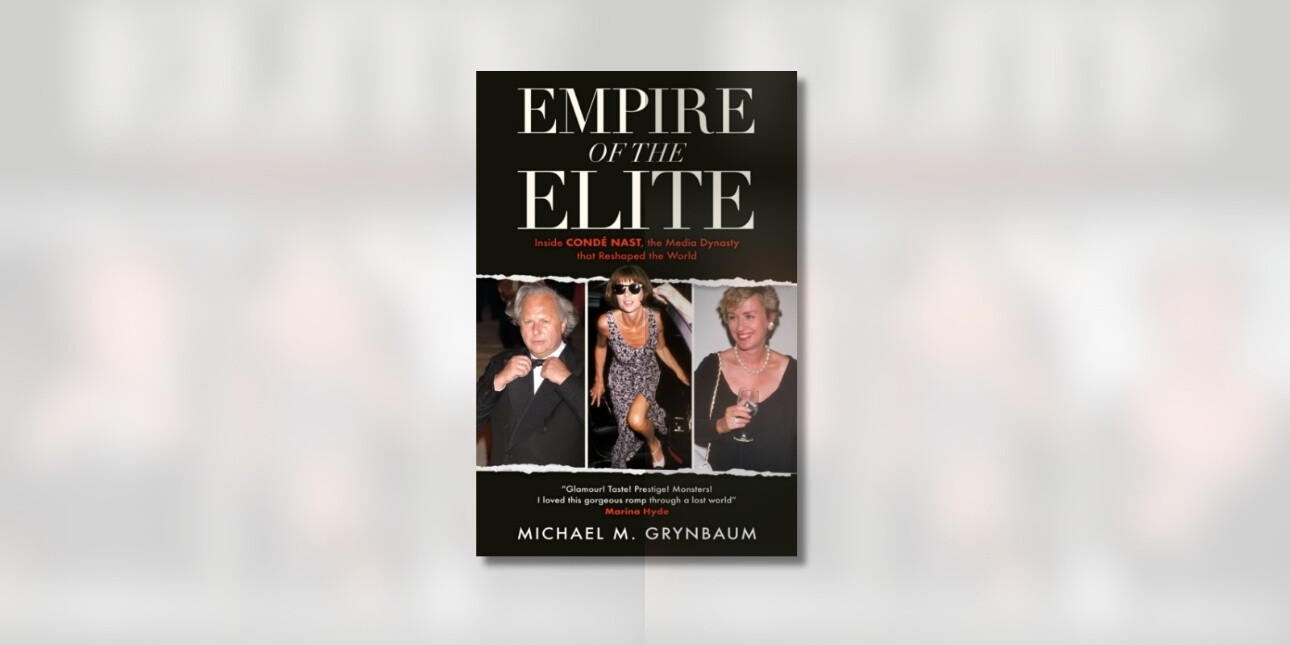Empire of the Elite: Inside Condé Nast by Michael M Grynbaum - book review
A smart, juicy, gently elegiac portrait of the golden age of media kingdom Condé Nast, in an expose that’s equal parts fascinating, funny and fabulously bonkers
What do you get when you mix impeccable style, bottomless expense accounts, and a culture where eating asparagus with a fork could cost you a job?
You get Empire of the Elite, former Condé Nast staffer Michael M Grynbaum’s richly detailed and deliciously entertaining exploration of the media powerhouse that for decades told America (and by extension, the world) what was fashionable, influential – and wildly out of your price range.
Under the long shadow of the famously reclusive publishing titan Samuel Irving “Si” Newhouse Jr, Condé Nast grew into a glossy kingdom of cultural bibles. Its flagship magazines – Vogue, Vanity Fair, The New Yorker, and GQ – were tastemakers and status symbols, whose secret sauce lay in mixing highbrow with pop.
And this fusion of Pulitzer-nominated journalism (Tom Wolfe earned $12 a word at Vogue in the 1980s) and celebrity spectacle was quite deliberate. The mission, as former Vanity Fair and New Yorker editor, the audacious Tina Brown famously decreed: “To make the sexy serious and the serious sexy”.
Vogue to Vanity Fair: a Condé Nast journey
Grynbaum takes us through the rise and fall of this media juggernaut, from the heady 1980s and 1990s boom years (think: limos, power lunches at the Four Seasons and oversized dark sunnies) to the slow, inevitable, digital-era comedown, beginning with the tale of how Newhouse Jr, the son of a tenement-raised press baron, took the publishing house his father acquired in the late 1950s, and from 1975 turned it into the ultimate arbiter of good taste.
Here, a raft of fiercely ambitious editors would acquire god-like status, wielding enormous cultural and editorial power. The likes of Vogue’s legendary Anna Wintour, famously the model for Miranda Priestly, the icy, impeccably stylish editor-in-chief in The Devil Wears Prada, whose whims became commandments. Or Vanity Fair’s Graydon Carter, who originally coined the term “short-fingered vulgarian” for Donald Trump – a jab that has reportedly haunted Trump ever since.
Anna Wintour's legacy
Their influence extended way beyond the magazine pages: under Wintour, the Met Gala became the glittering, A-list event it is today, while Carter’s Oscars party became a magnet for the elite, further cementing Condé Nast’s role at the intersection of culture and power.
Of course, no insider portrait of Condé Nast would be complete without its share of gossip, and Grynbaum delivers. As the New York Times says, “The technical word for this book is juicy”. Empire… relays tales of a would-be editor who thinks she lost out on a job because she was gauche enough to eat her asparagus with (gasp) cutlery during a lunch interview. While Wintour reportedly liked the essence of blueberries – just not the berries themselves – so an assistant was charged with surgically removing them from her muffin each morning.
As journalist Hadley Freeman recalled for the Sunday Times of her own job interview in 2000, “The unlucky assistant deputised to show me around explained that at Vogue everyone kept cups of ice cubes on their desk for munching on because eating food in the office was frowned on. Every piece of furniture there, including the light fixtures, clearly cost more than my monthly rent. The editor who interviewed me said that my salary would be very low ‘because most people here have a private income’. I knew by this point that I would not work at Vogue.”
The American dream
Beyond the eccentricities and extravagances, Empire… is also a cultural history, tracing how Condé Nast navigated the shifting tides of 20th-century aspiration and social mobility. Many of the key players were outsiders – Jewish, immigrant, working-class – who intimately understood the anxieties of status and exclusion. And they’d go on to build a media empire that both reflected and shaped American dreams, selling a carefully curated image of the “good life” to millions.
Beneath the glamour, there’s a melancholy at the fringes of this book – a sense that something grand and absurd has been lost. The 2008 crash was a turning point. As Grynbaum writes, “Condé’s metier was privilege, and privilege had become a dirty word”. The fabled perks were quietly mothballed, the limos disappeared, and (quelle horreur) the free bottles of Orangina, cancelled. The digital revolution upended everything. Now, anyone with a smartphone can be an influencer – their own brand. Why wait for Vogue to anoint you when you could just go viral?
Magazines to digital
And yet as Grynbaum suggests, Condé’s fingerprints are still everywhere thanks to social media; from TikTok to Instagram, luxury lifestyles are being shared everywhere, copying the style and ideas that Condé Nast helped create and spread. Even Trump was arguably one of its creations, thanks to a GQ profile and The Art of the Deal, commissioned by none other than Si Newhouse.
Grynbaum reminds us of a time when journalism was king, fashion was theatre, and magazines truly mattered. And budgets? Well, as Brown once said, “Budgets are for the unimaginative.”
Empire of the Elite: Inside Condé Nast, the Media Dynasty That Reshaped the World by Michael M Grynbaum is published by Hodder & Stoughton.

Ali Catterall is an award-winning writer, journalist and filmmaker whose writing has featured in the Guardian, Time Out, GQ, Film4, Word magazine and the Big Issue, among many others. Ali is also the writer and director of the 2023 film Scala!!!
You may also enjoy
What to wear to work now: The shifting codes of workwear
Great PR: the royal visit to a startup that gave Prince William his ‘best day’
Louise Chunn on mental health in the creative sector and shaping women’s mags
Andy Coulson: 'I enjoy doing crisis comms work because I lived it.'

